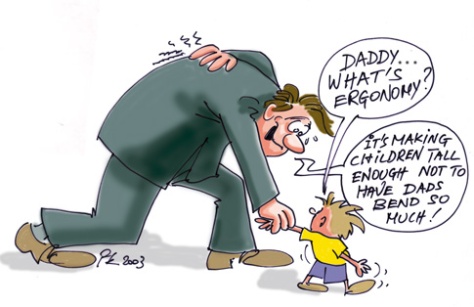What’s Ergonomics?
It can be simply defined as the scientific study of human work (Greek ‘nomos’ = ‘study’; ‘ergos’ = human work). It considers physical and mental capacities and limits of the worker, as they interact with tools, equipment, work methods, tasks, and the working environment. Its main goal is to reduce work-related musculoskeletal disorders (MDS) by adapting the work to fit the person, instead of forcing the person to adapt to the work.
Since everything is designed for human use or consumption, human characteristics should be considered at the beginning of the design process.
They interact in three areas:
a) The worker: Physical, psychological, and non-work-related activities.
b) The job: Work procedures, equipment, workstation design.
c) The environment: Physical and psychosocial climate.
Physical Risk Factors:
a) Repetitive motions: muscular conditions that result from repeated motions performed in the course of normal work or daily activities.
b) Duration: Amount of time a person is continually exposed to a risk factor.
c) Frequency: How many times a person repeats a given exertion within a given period of time.
d) Contact stresses: Repeated or continuous contact with sharp or hard objects.
e) Vibration: When a specific part of the body comes in contact with a vibrating object.
Sources: a) http://www.medicinenet.com/repetitive_motion_disorders_rmds/article.htm
b) Duoc ESP Industrial Design Coursebook
